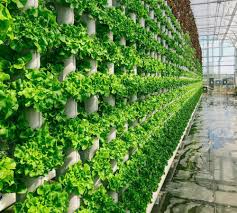 Indoor Food Growth from the Field of Master Mind Farming (MMFAR)
Indoor Food Growth from the Field of Master Mind Farming (MMFAR)
Shared from the nature of: Joseph Mercado
Content Contributor: Anthony Crain (LinkedIn)
Article Author: Current Affairs-GKToday
To: Farm Lover
Blog Post #876
Re: Vertical Farming
Date and Time: Sunday, January 5, 2019 at 10:38 a.m.
Dear Farm Lover,
The current world population is 7.7 billion (April 2019). According to the United Nations, the global population is to reach 10 billion by 2050 and therefore the food production should increase by 70%.
What is Vertical Farming?
Vertical Farming is the process of growing agricultural crops in vertical stacks in door, in a controlled environment. It uses the same amount of water as that of regular farming. However, the other raw materials consumed by vertical farming is less. According to FAO (Food and Agriculture Organization) of the United Nations, vertical farming consumes 75% less raw material as compared to traditional farming.
In terms of land area, vertical farming will require 6 square metres of land space to produce same quantity of food as grown in 72 square metres of land in traditional farming.
Benefits:
Under Vertical Farming, the plants are grown indoors with or without soil. This protects the crops from incessant rains, unruly winds and dry climate. It is well suited for urban areas. The crop yield in vertical farming is more than traditional farming as it adopts two major farming techniques namely hydroponics and aeroponics.
Hydroponics and Aeroponics:
In Hydroponics technique, roots are submerged in water that is infused with nutrients. Aeroponics is a farming method where plants are grown in closed or semi-closed environment with nutrients sprayed in the air.
Carbon print:
The United Nations Environment Program (UNEP)’s Emission Gap Report of 2019 says that Agriculture and Transportation are among the five world’s biggest emitters of greenhouse gases. On the other hand, the carbon print of Vertical Farming is very less. With adaptation of nano cost climate control, low-carbon electricity, high-efficiency lighting, vertical farming achieves low carbon foot print easily.
India’s status:
In India Vertical Farming has been introduced in 2019. ICAR is working on techniques and adaptations to introduce in the market. However, it has still not found its application at wider level.
Content Source: CurrentAffairs.GKToday.in

Email Us a Message

Please send us an email message below and we will serve you with an answer momentarily.
Fly Over to the MMU Facebook Page with Hoot



